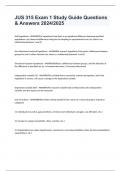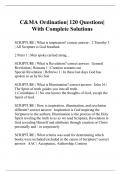Samenvatting
Summary The making of modern macroeconomics chapter 21-28 (midterm)
Summary of chapters 21 up to 28 of the book Economics by Paul Krugman and Robin Wells (5th edition, ISBN: 978-1-319-18194-9. This material is relevant for the midterm of the course
[Meer zien]














